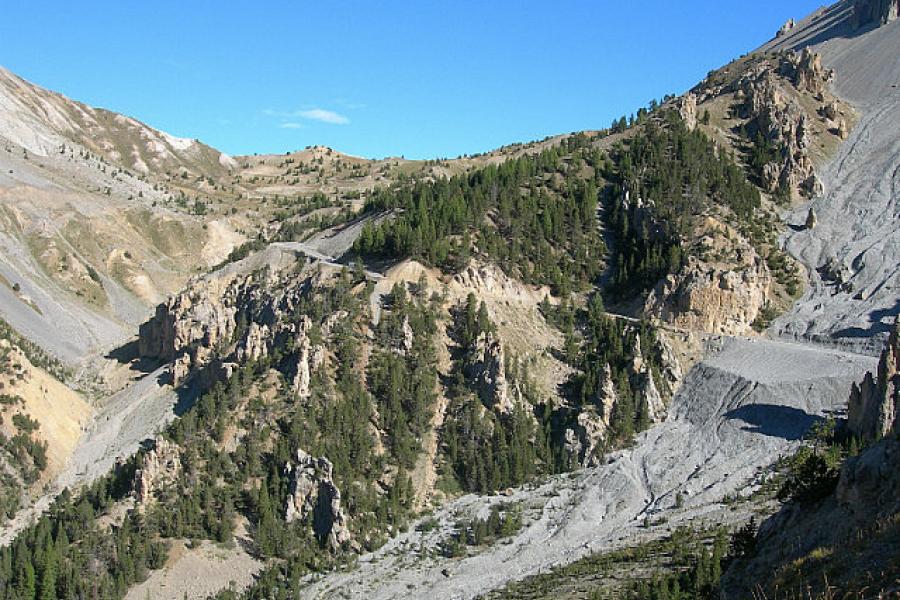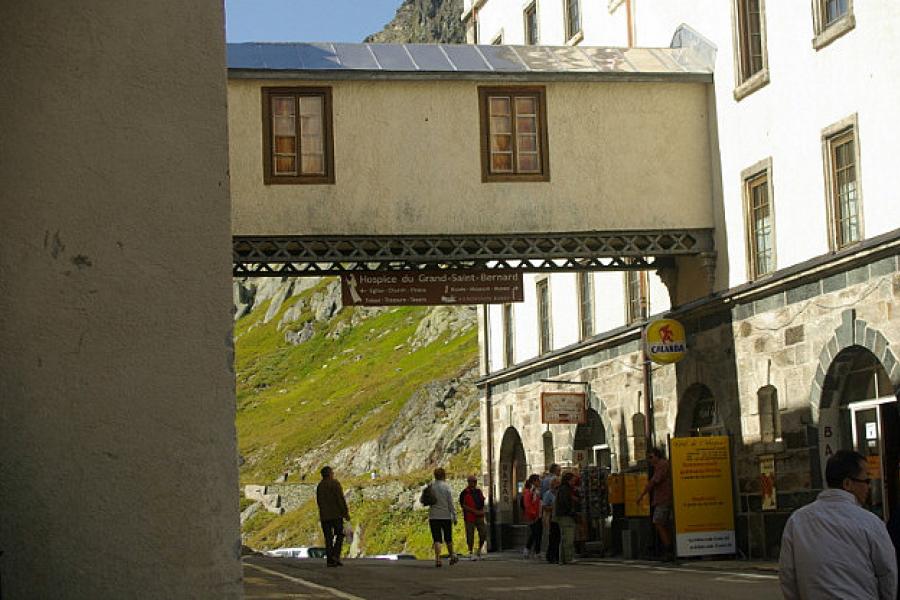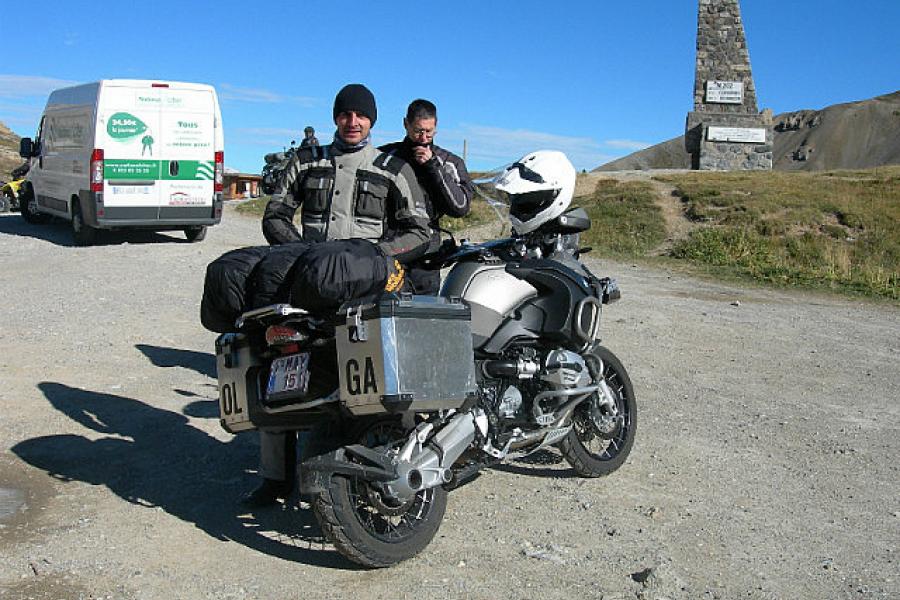6. Something about the Passes (Originally posted 23 Sep 2012
Country
We wound our way south down through the French Alps then cut west and dropped onto the Côte d'Azur. This famous strip of land running from the Italian border to Toulon, the world's first mass tourist resort, was discovered and then developed by the British in the 19th century and has never really recovered from the experience. Our purpose there, apart from enjoying the last of the summer sun on the beach, getting a new set of brake pads for Just Sue and doing the usual tourist rubber necking in Cannes, was to have a week off with our daughter, son-in-law and granddaughter in a hinterland village.
Our arrival at the point where the mountains sweep down into the Mediterranean also marked the completion of our grand circuit of the Alps from the Julian Alps in Slovenia. Over two years we had covered more than 6,000 km in the Alps, crossed more than 50 high passes and explored the mountain back-roads of six diverse countries. While we would not consider ourselves experts on the Alps by any means, we have developed a feel for the place; a sense of its history and purpose and a good understanding of how things work in this part of the world. So, since our family week is rather too private and, frankly, boring to make a blog, I will use the space to give something of the feel we have for the Alps and why it has become so important to us that we have returned to complete an epic survey. This blog is, therefore, a little about the passes themselves.
The Alps were thrown up from the ocean floor in a slow collision of continental plates that began around the time of the extinction of the dinosaurs. In a deep valley in Switzerland, the canny traveller can stand in the middle of a bridge that literally spans this amalgam of Europe and Africa. What lies to the north, running all the way north to the North Sea, is continental Europe with its forested plains, bitter winters, root vegetables, beer, German work ethic and economic success. To the south of the Alps is Mediterranean Europe, a land of salad and wine, olives and sun, economic torpor and, eventually, Africa. These mountains represent not only a physical divide, but also a cultural one.
But none of this was enough to attract us here. What we came for was the mountain roads; by reputation the best motorcycle roads in the world. But in the Alps, there was more to the roads than cobbles and bitumen. We found each pass had its own history and story and that some were as fascinating as their amazing engineering. From the time that the last ice age started to recede people have made their way into the Alps. In September 1991 a couple of German climbers discovered a body on the Similaun Glacier. This is the best link we have with those early Alpinists. Ötzi, as the body was called, was more than 5,500 years old, wore well-made shoes, goatskin clothing, and a bearskin hat. He carried his possessions, including charcoal for fire-making, in a rucksack with a wooden frame. Some of the ancient crossings used at this time are still known and can be hiked by the enthusiast.
Every pass seemed to have its purpose and story. Some were traditional crossing places gradually improved over the centuries to make tracks and then roads and then wider roads and, eventually, tunnels. Others were built by the Italian or Austrian Armies to resupply the WWI front in the Alps. These roads had all the expediency of quick construction with the more limited engineering of the day. Newer roads like Nufenen Pass have modern survey. It was built with heavy plant that has created a wide sweeping and fast road into the mountains. The city of Lucerne controlled the approaches to the St Gottard Pass, grew rich in the process and became the first “Swiss” town. The Gottard was opened in 1220 when clever engineers bridged the Schollenen Gorge and opened the most heavily used route from Germany to Italy. The Silvretta Hochalpenstrasse supports a hydro-electric scheme to rival the Snowy Mountains. There are too many stories to tell here but a little more detail on one famous pass should provide the flavour.
By the time of Roman hegemony, a mere 2000 years ago, there were well established routes over the mountains. The towns of Aosta in Italy and Martigny in Switzerland have extensive Roman ruins from a time when they guarded the southern and northern access to the Great St Bernard Pass. There are records of this pass from 400 BC and it is one of six passes that are considered possible routes used by Hannibal in 218 BC. There have been many new roads and adjustments made over the centuries but a section of the old Roman road is still visible and usable near the top of the pass at an altitude of 2,469 m. In 1964 the St Bernard Tunnel was completed taking the commercial traffic off the mountain and allowing an all year round transit.
The Great St Bernard Pass is famous for its monastery, established in 1049 AD by Bernard, Archdeakin of Aosta, and for the St Bernard dogs used by the monks to sniff out travellers buried in the snow. Some of the dogs were equipped with a barrel of beer (not brandy) to revive the rescued. The monastery was well equipped to cater for the travelling public of the day which commonly included pilgrims to Rome from the holy city of Canterbury in England. There was a range of services available in addition to food and shelter and the monastery even ran to its own morgue so that those searching for missing relatives might have a place to start. Two of the monastery buildings are still in the pass, although both date from the Middle Ages, and there are some dogs kept there in the summer for the tourists.
These days the important work of the monastery, and the dogs, is fleecing the tourists who use the old roads in large numbers every summer. But, it was always so. The monks grew rich providing services to the travelling public. When Dickens passed this way in the 19th century he made the point that the monks “...are a lazy set of fellow... rich and driving a good trade in in-keeping...” Other less distinguished travellers made similar or more severe comments. Napoleon came through the pass in 1800 with an army on his way to war with Austria and the chance to do away with our friend Andreas Hofer. He, however, didn't pay his hospice bill of 40,000 francs, an account that remained outstanding until settled with a token payment by French President Mitterrand in 1984. Many would have seen the heroic painting of Napoleon crossing the Alps on his prancing white stallion which is, of course, a nonsense. General Bonaparte made the crossing mounted on a sure-footed mule as any sensible fellow would.
All of which brings us back to the Côte d'Azur, and the end of a relaxing week off. My only comment on this place I will leave to a quote from Jim Ring from his excellent book Riviera, the Rise and Rise of the Côte d'Azur: “Even though the reality of the Riviera seems daily to diverge even more from the dream and the ideal, so powerful is this promise that the reality is ignored.” Tomorrow we go north again, into the mountains and back to a different France.





















